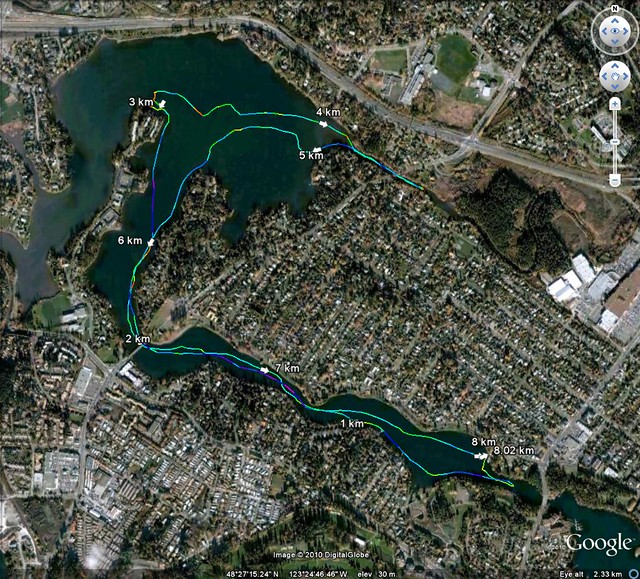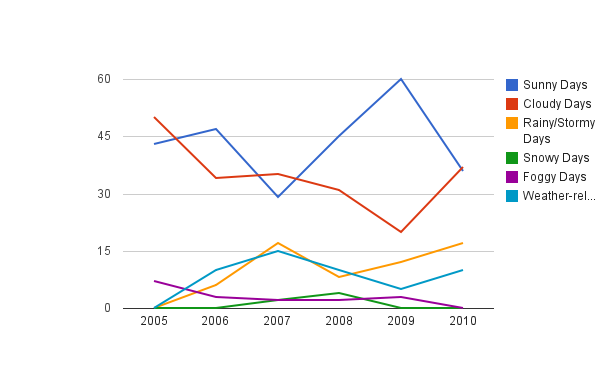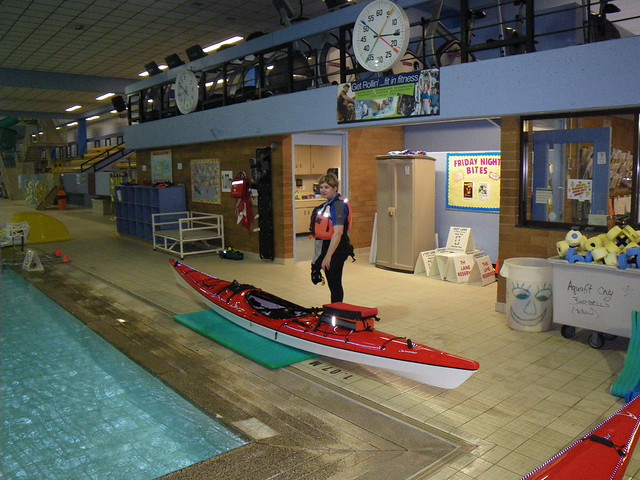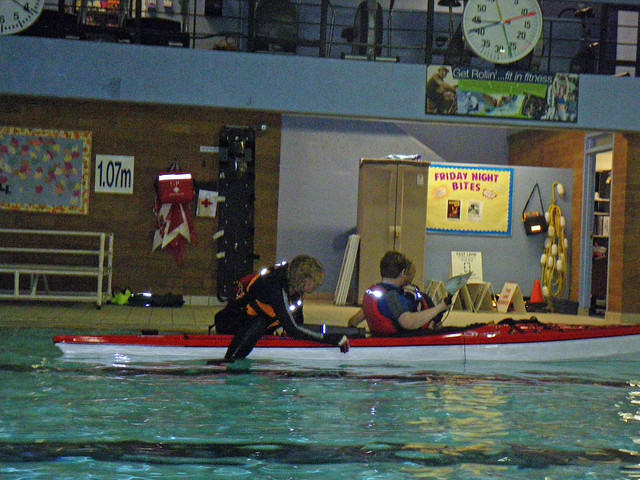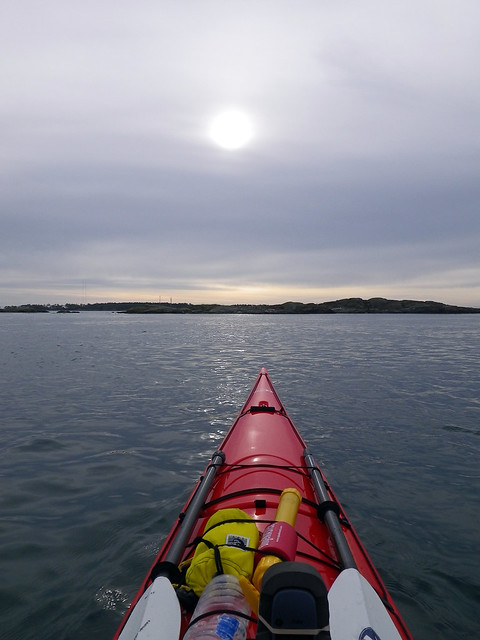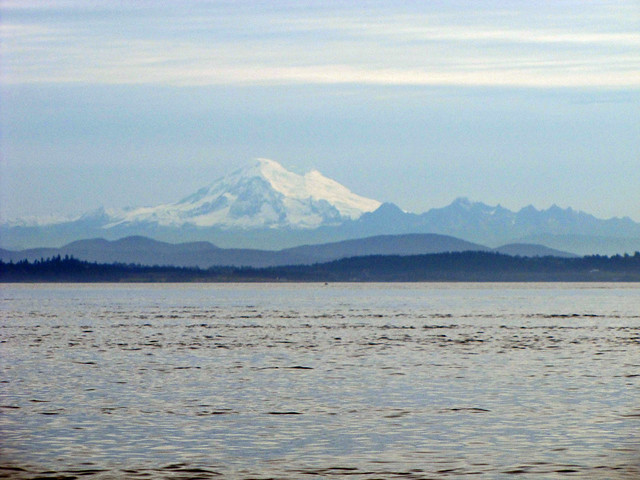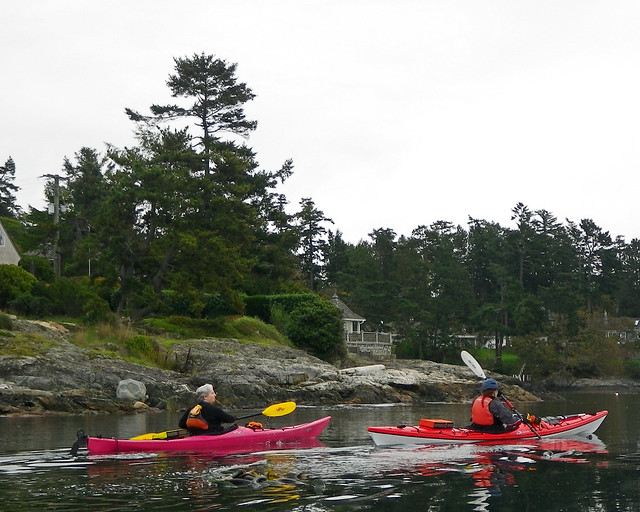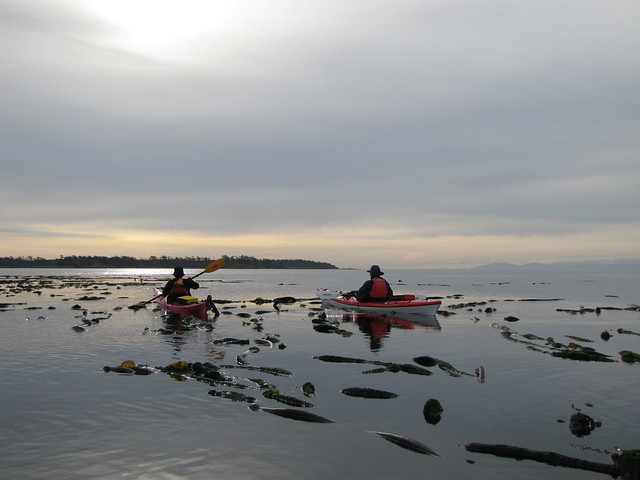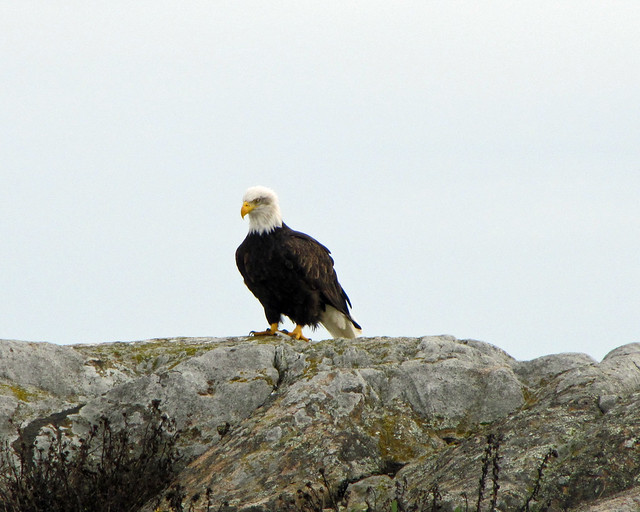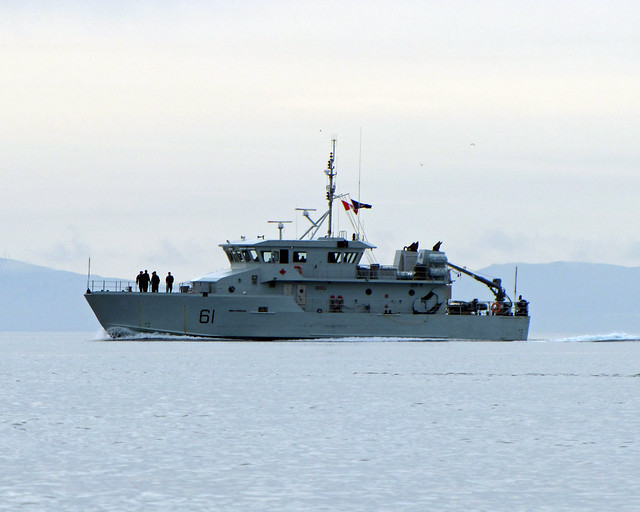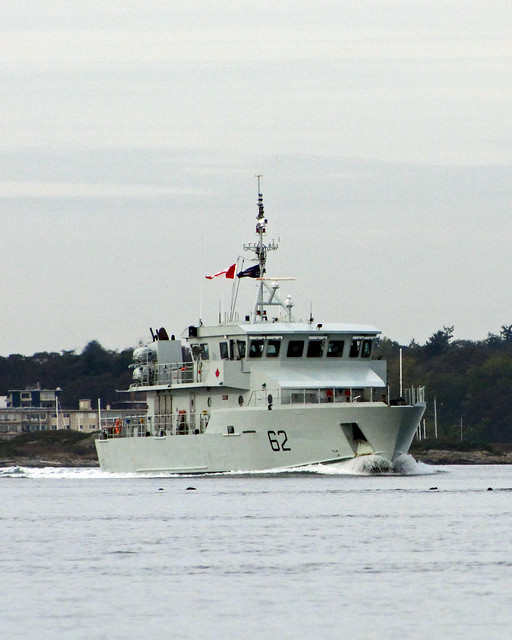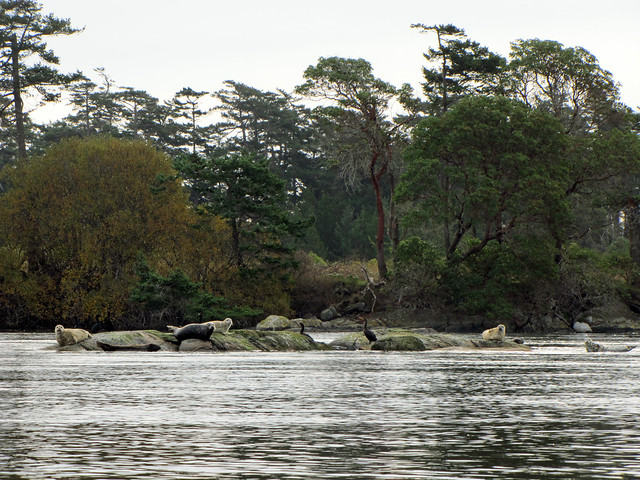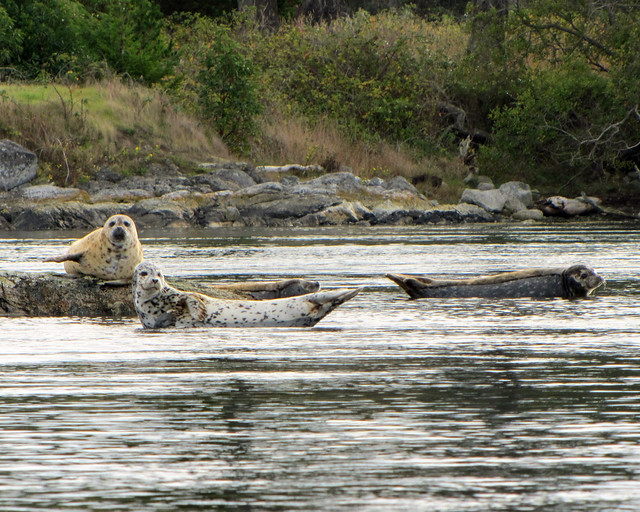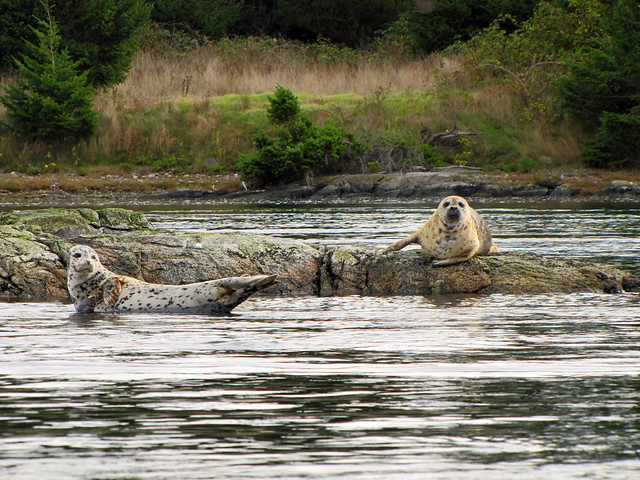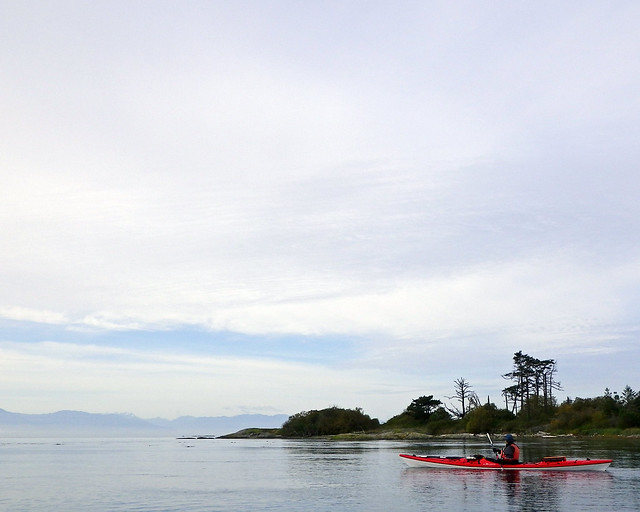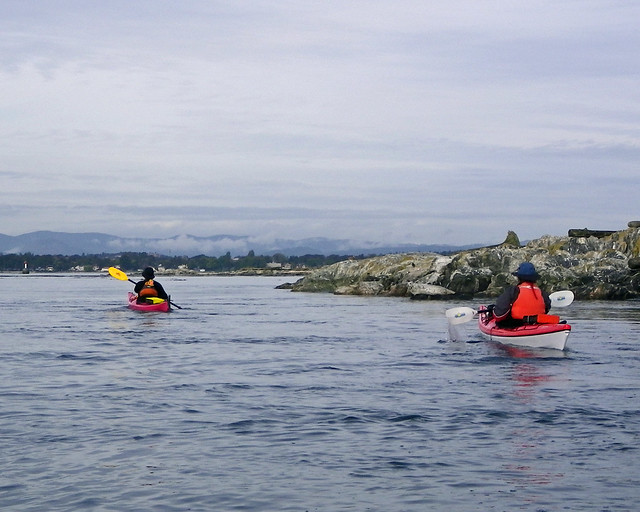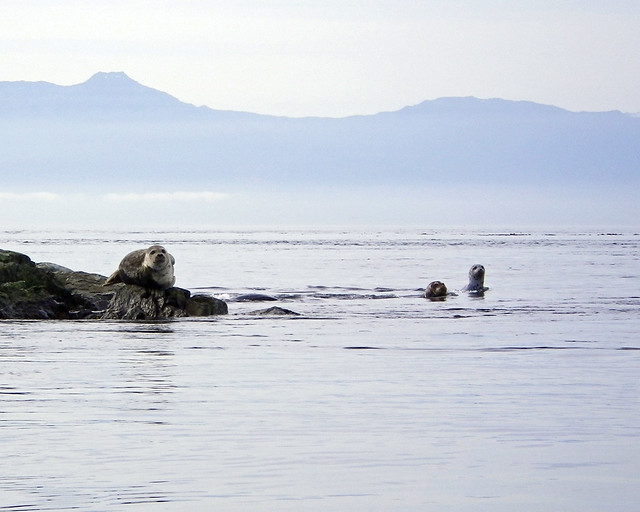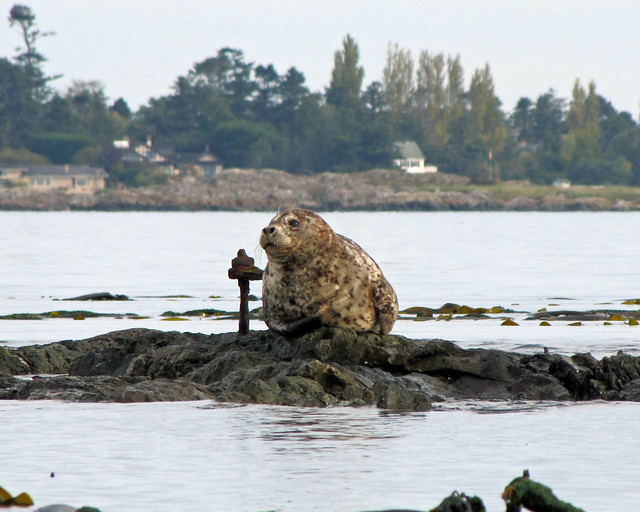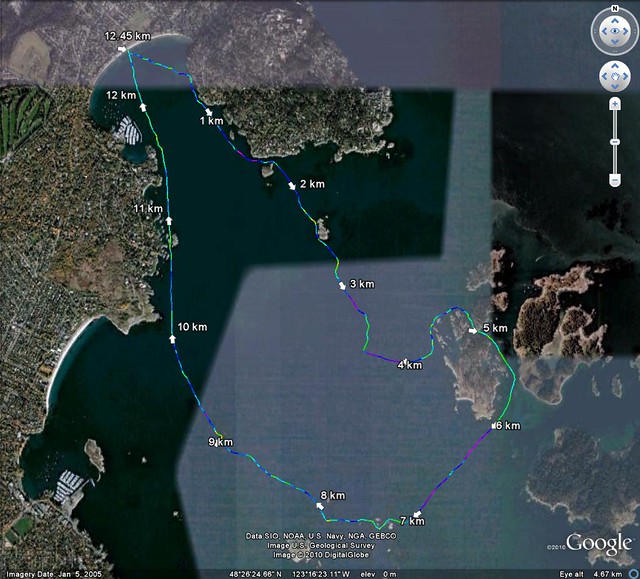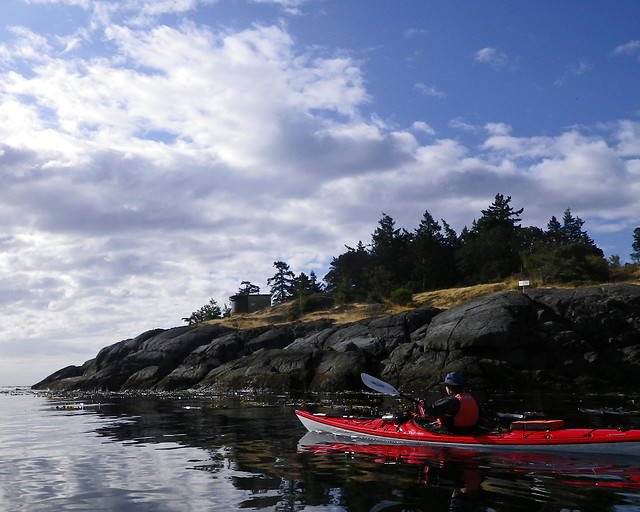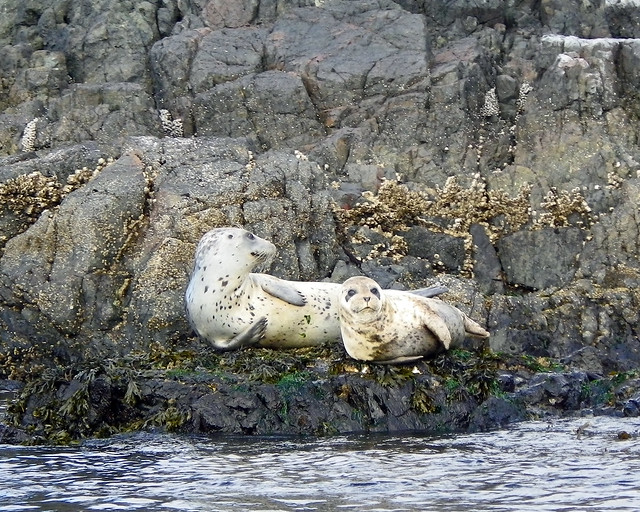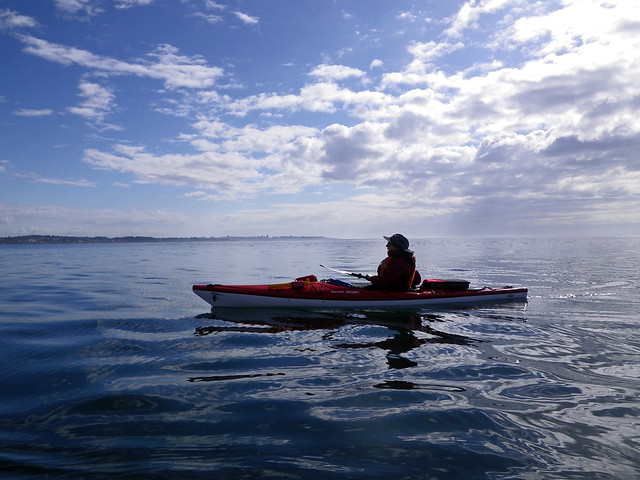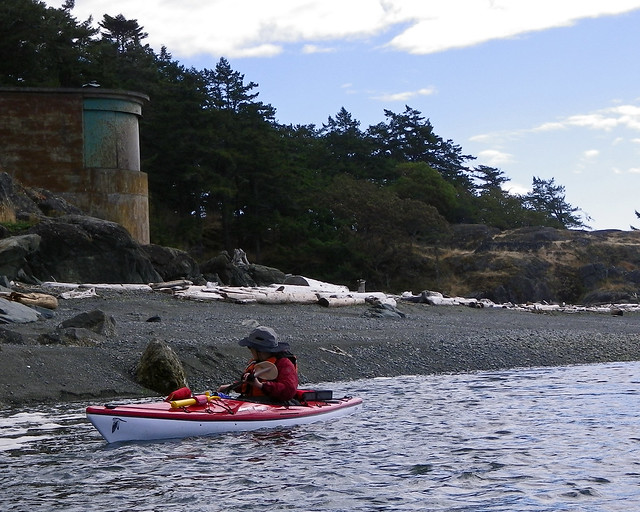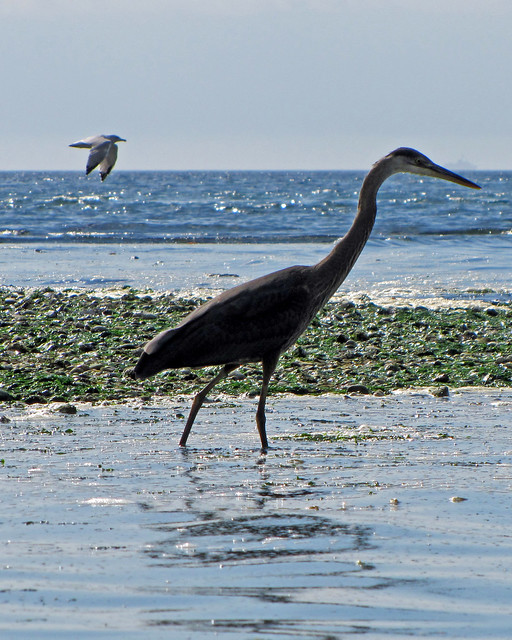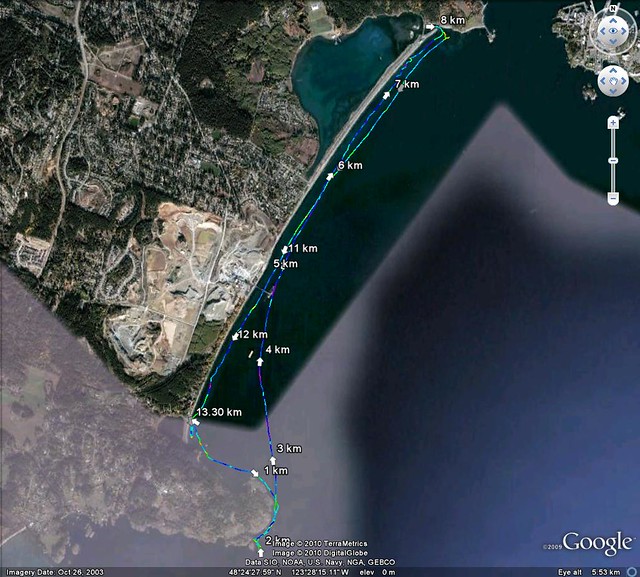Yeah, it's been a while since we hit the water, not counting our pool session a couple of weeks ago. I blame the weather. The weather was actually quite nice in October, milder and drier than normal, at least anecdotally. But we actually believed the weatherman when he said that most paddling days would have bad weather. And that was a mistake, of course, because generally the weather was good when the weatherman was calling for bad, but we, trusting souls that we are, had already made other plans for those days that were forecast to have sucky weather. You see where this is going, right?
This past week brought us our first real dose of winter this year, three snowstorms in five days. The snow might be mostly gone now, but it was still darn cold this morning. Despite this, Louise and I rolled our kayaks down the hill to go for a paddle on The Gorge.
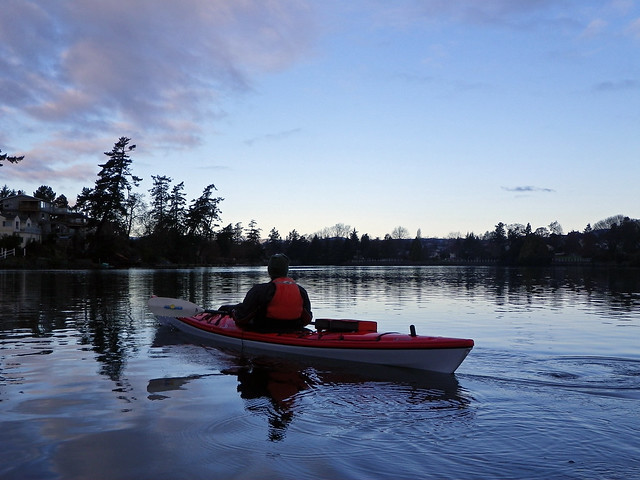
It was cool, maybe about 1 degree when we started out, but it was forecast to be a sunny day and we were sure hoping the sun was going to poke through the clouds quickly and start warming things up. There was still a bit of snow left on the ground from the past week's snowfalls.
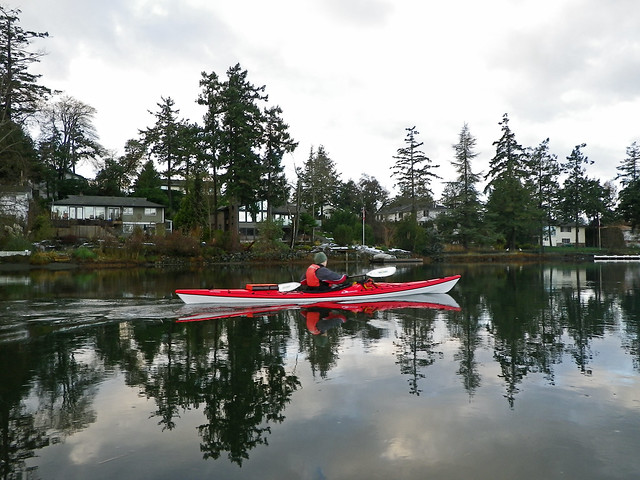
We paddled over to Gorge-Kinsmen Park hoping to spot the two swans that have been hanging around there the last few days, but they weren't there this morning. We were starting to wonder if all we were going to see was a few cormorants up a tree.
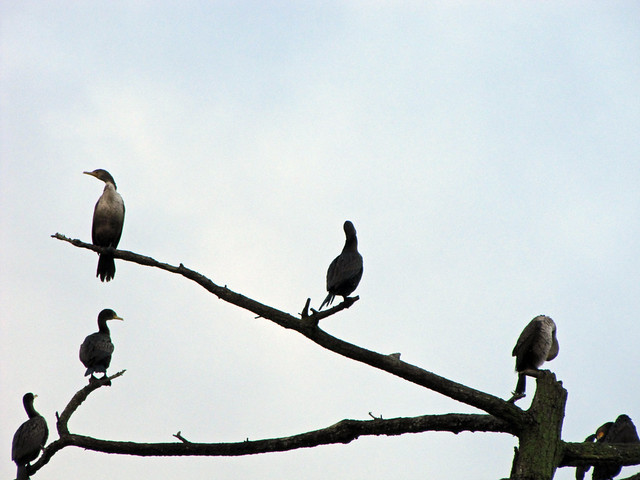
But after we passed under the bridge and into Portage Inlet....
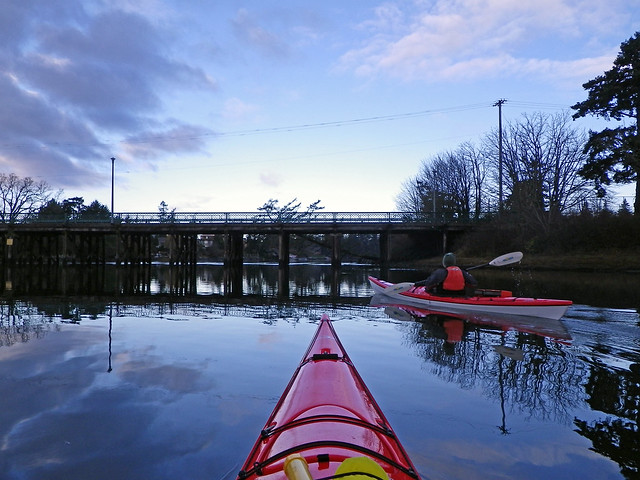
...and passed the phalanx of geese....
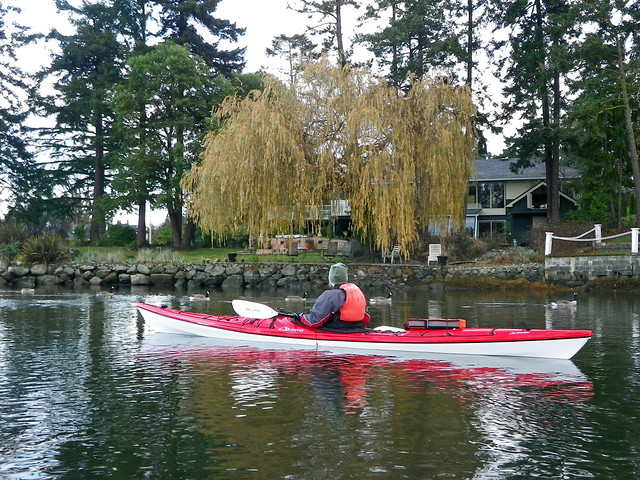
...we spotted the swans. Or rather, they spotted us and headed right for us.
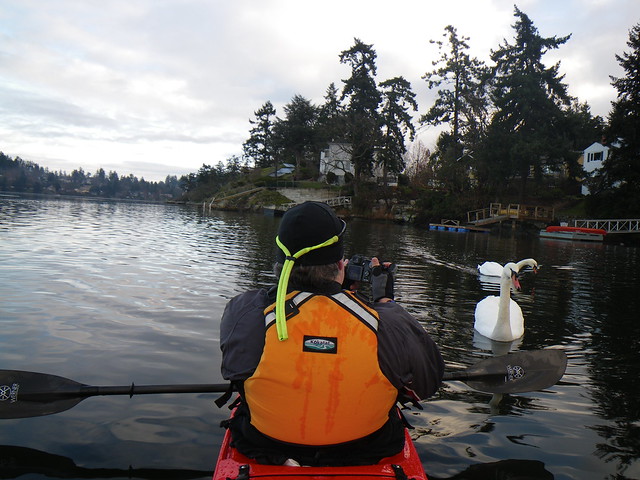
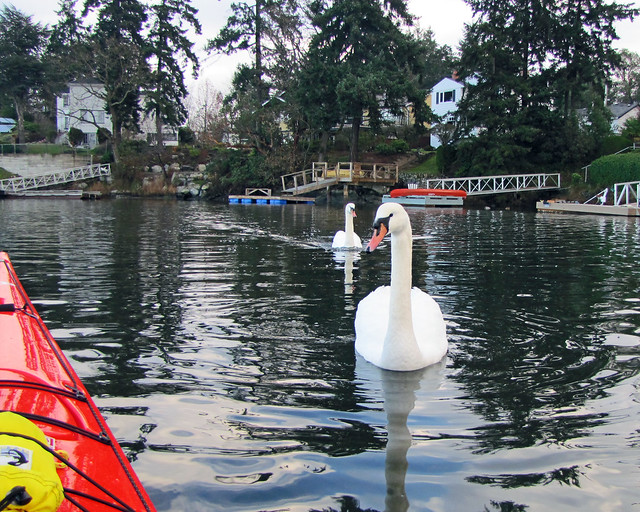
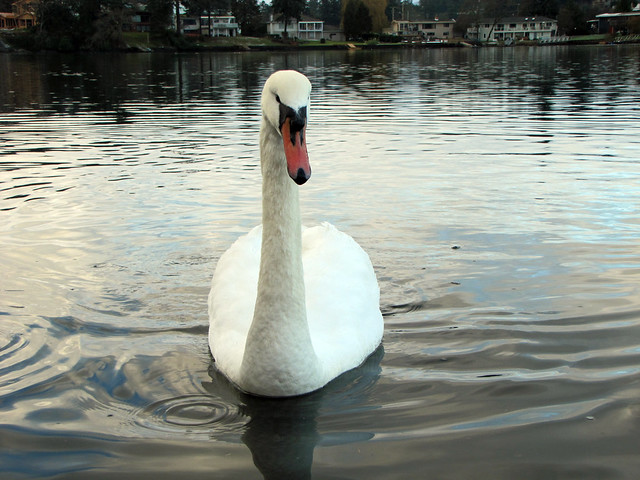
They showed no fear of us. Clearly this pair have had plenty of contact with humans.
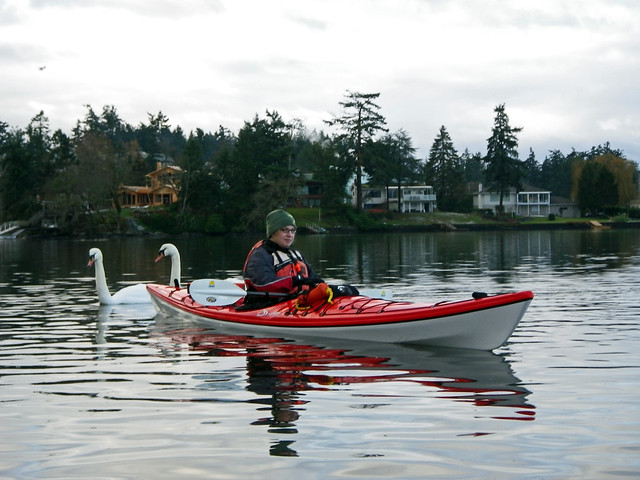
Finally after a few minutes of swimming around us, they went on their way....
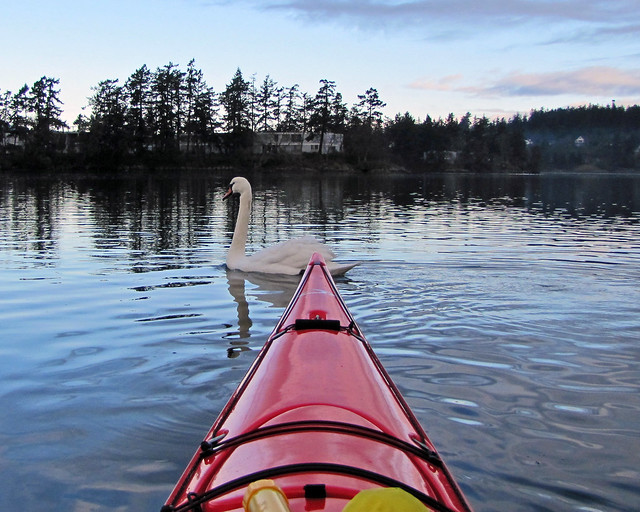
...and we went on ours.
I was hoping that we'd be able to get into the Western arm of Portage Inlet and up to the tunnel on Craigflower Creek, but as we approached the entrance to the arm Louise and I both had the sensation that paddling suddenly became a little harder as if the water had become thicker. And as I looked ahead I could see that the water had not only become thick, it had become solid. The way was blocked by ice.
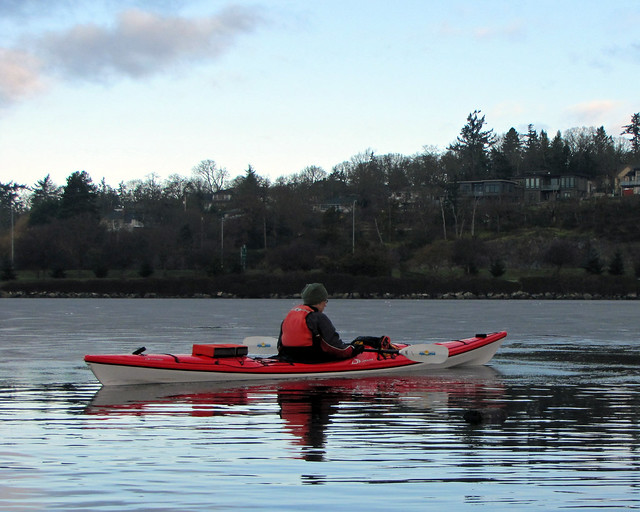 We'd encountered ice here once before
We'd encountered ice here once before, but that was really just a thin layer on the surface. This time, we were dealing with some solid ice, maybe a half inch thick or more.
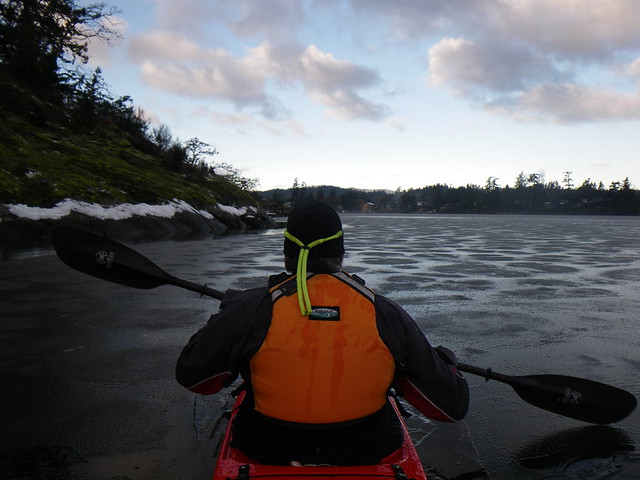
At first we thought we could break the ice but we were finding spots that were so thick that the kayaks weren't sinking through it, nor could we break it with our paddles. Flipping over in this could really ruin your day. We tried sneaking around through the thin ice near shore, but that proved to be futile as there wasn't nearly enough of it for us to pass. The whole western arm was frozen up as well as the northern shore, so we decided to head east and follow the outline of the ice.
Which didn't mean that we didn't occasionally try to be an ice breaker....

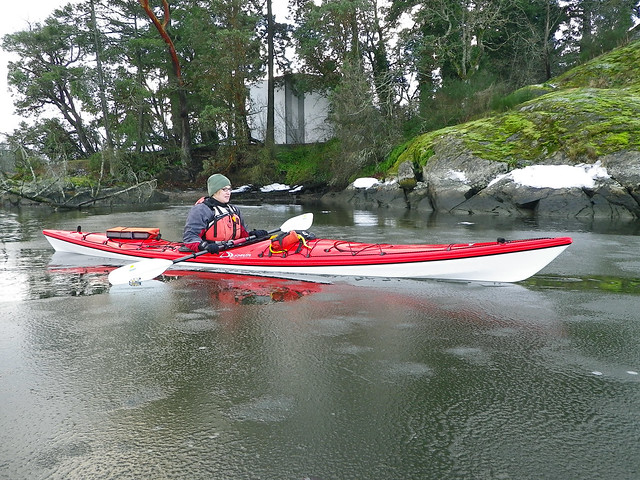
As we paddled along three or four seals kept up with us and checked us out. Here's one sizing up Louise....
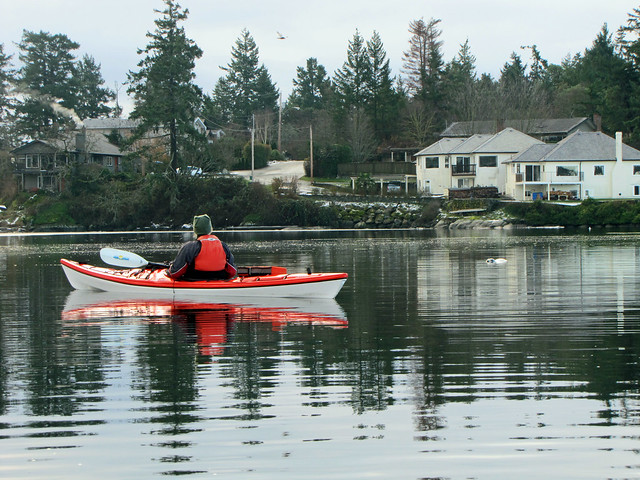
...and I was so busy taking that picture of Louise and the seal that I didn't notice until I checked my pictures later that another seal that had popped up right in front of me.
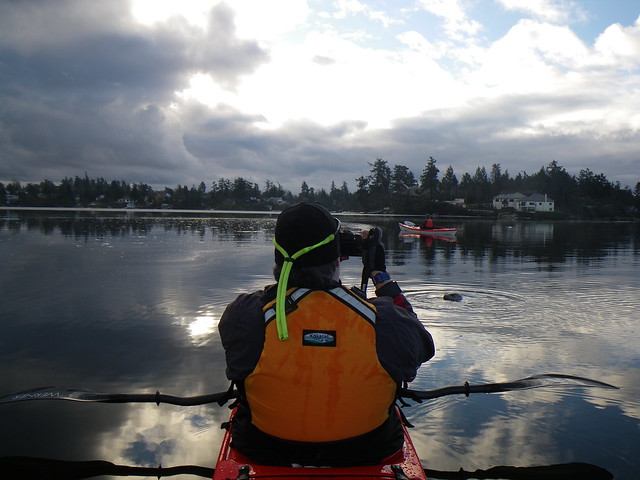
As we followed the ice, we noticed a strange line in the water. You can see it just to the left of my kayak.

It followed the contours of the ice. Was it some sort of boundary layer either between temperature zones, or between salinity zones? The Gorge at one end of Portage Inlet is ocean salt water, but the Inlet is also fed by fresh water creeks, so they've got to meet somewhere.
We got as far as Colquitz Creek, then decided to head back because the sun never did come out for more than a couple of minutes and suddenly a cup of hot chocolate seemed like a really good idea.

Trip Length: 8.02 km
YTD: 228.10 km
More pictures are
here.
